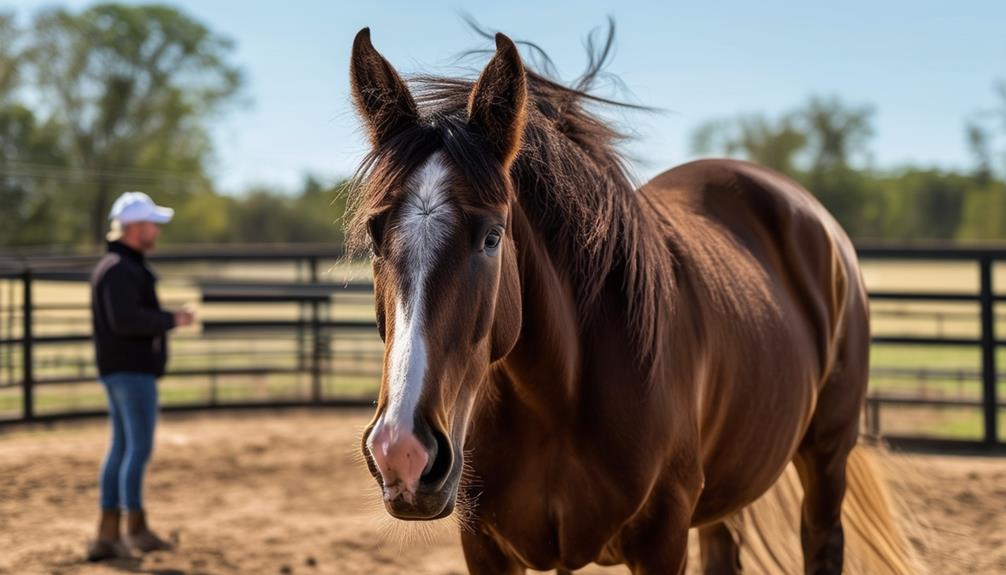When training difficult horses, did you know that over 60% of horse owners face challenges in handling their equine companions? Understanding the behavior of a challenging horse is the first step towards successful training. By implementing strategies such as building trust, clear communication, and patience, you can navigate through the complexities of training a difficult horse. These tips, combined with tailored training methods and goal setting, can help you establish a strong bond with your equine partner. But there's one crucial element that can truly make a difference – can you guess what it is?
Understanding the Horse's Behavior

To effectively train difficult horses, understanding their behavior is paramount. Horses are highly social animals, with herd dynamics playing a crucial role in their instincts and behavior. By observing their body language and interactions within the herd, you can gain valuable insights into how they communicate and establish hierarchies.
Understanding these dynamics can help you build a stronger connection with your horse and earn their trust.
Socialization is a key aspect of a horse's life, shaping their behaviors and responses to various situations. By recognizing their innate need for companionship and belonging to a herd, you can tailor your training methods to align with their natural inclinations.
This understanding allows you to approach training in a way that resonates with the horse's instincts, making the process smoother and more effective.

